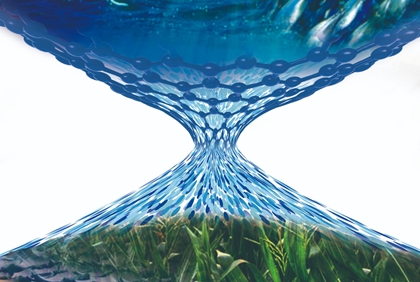|
NOVIDADES
A graphene-based desalination membrane with the potential to be scaled-up for practical applications has been created by a team of physicists in China and the US. Yanbing Yang and Xiangdong Yang at Wuhan University and colleagues created the material by combining a single sheet of graphene with a mesh of carbon nanotubes to create a centimetre-sized membrane that can remove salt from seawater. As the demand for fresh water increases worldwide, large-scale, new technologies for the desalination of seawater are becoming increasingly sought after. Removing salt from water is easily done by evaporation, but this requires large amounts of energy. Today, most modern plants pump seawater through a membrane that blocks the passage of salt ions. Called reverse osmosis, this process requires less energy than evaporation but could benefit from better membranes.  Freshwater: a new graphene-based membrane could someday be used in commercial desalination plants. (Courtesy: Quan Yuan)
Another approach is to create a membrane from a patchwork of small overlapping sheets of graphene oxide (also just one atom thick). Water can move through the membrane by permeating the gaps between the sheets – but the larger salt ions cannot. While scientists have already made centimetre-sized membranes this way, this material tends to swell-up when wet and let more salt through. A possible next step in creating practical large-scale membranes could be to stack several layers of nanotube-reinforced graphene membranes on top of each other. Molecules would enter the membrane via a pore but would then have to travel some distance between layers to find a pore in the next layer. This would mitigate problems associated with the widening of pores in single layers, and the presence of pores would minimize the swelling of the membrane. The membrane is described in Science. By Sam Jarman. Physics World. Posted: June 24, 2019. |
|||||||||||||||||||||||||